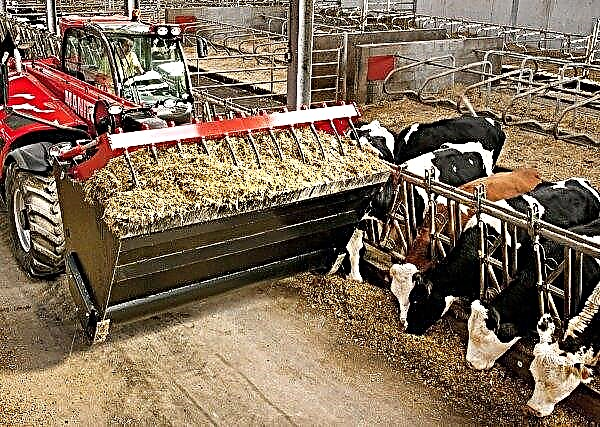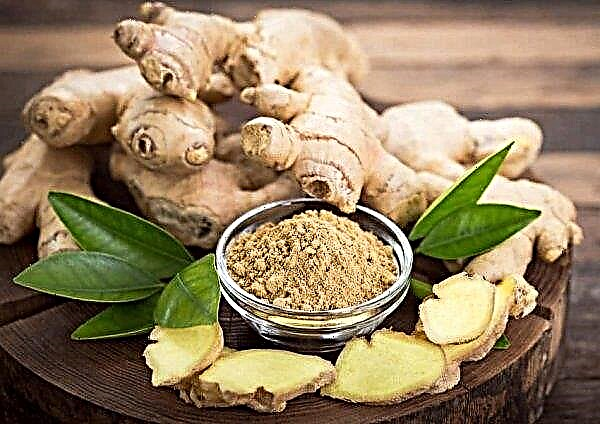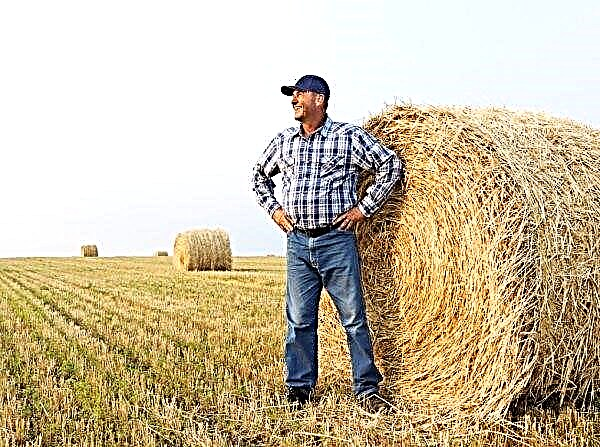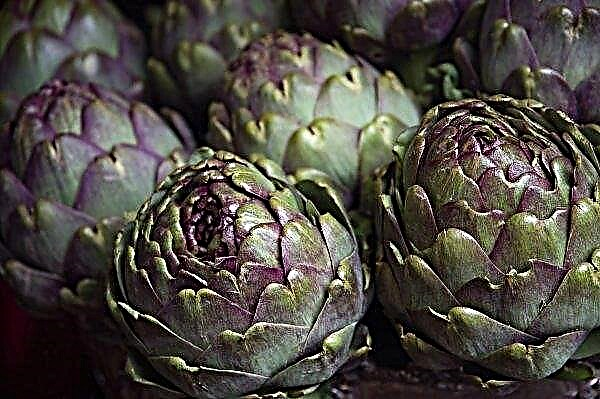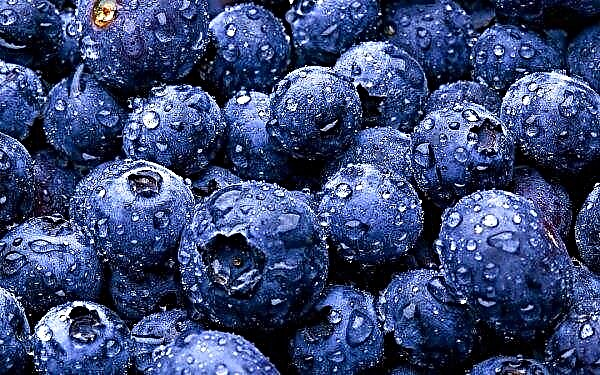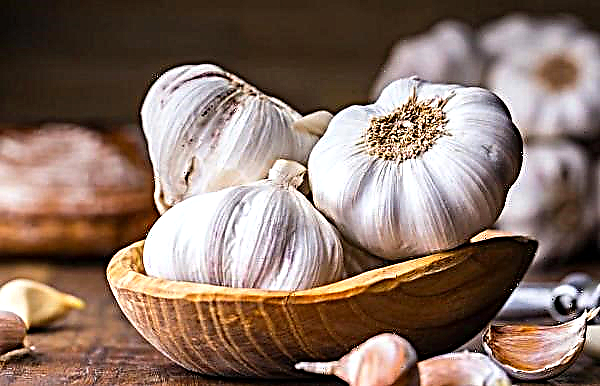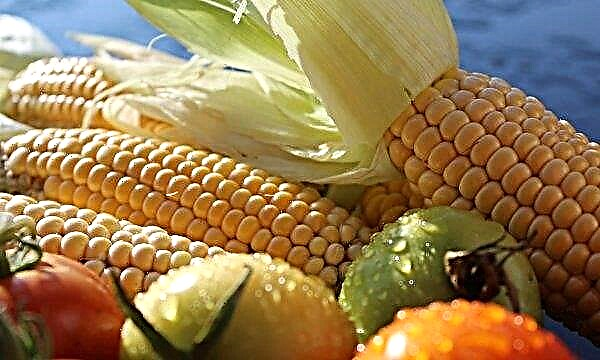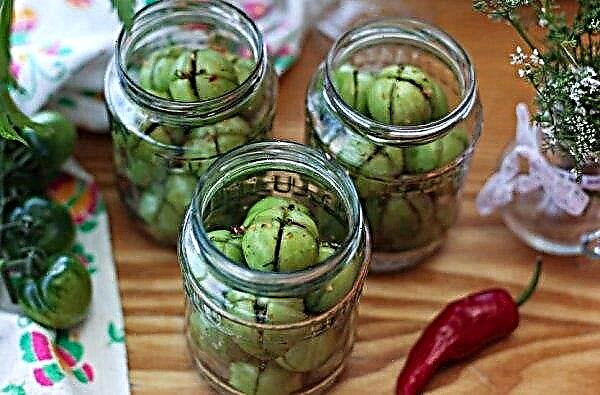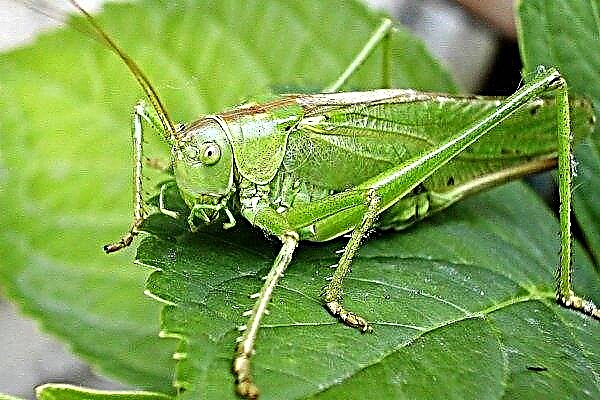Hydrangea can often be found in personal plots - its lush multi-colored flowers can decorate any landscape. However, despite the general unpretentiousness of this plant, many summer residents are faced with the problem of the appearance of brown spots both on the leaves and on the inflorescences themselves. How to deal with this and what preventive measures should be taken to preserve the health and appearance of hydrangeas, - further in the article.
Why hydrangea flowers turn brown
There are many reasons why brown spots may appear on hydrangea flowers. Among others, there are:
- Sunburn - with steady heat and the absence of shading (especially if such factors are simultaneously enhanced by hard watering), brown spots may form along the edges of the foliage. Without the use of appropriate measures (shading and the use of softened water), the affected fragments become black and can increase in size, affecting also the inflorescences.

- Excessive watering - It can also lead to the formation of brown spots throughout the body of the flower.
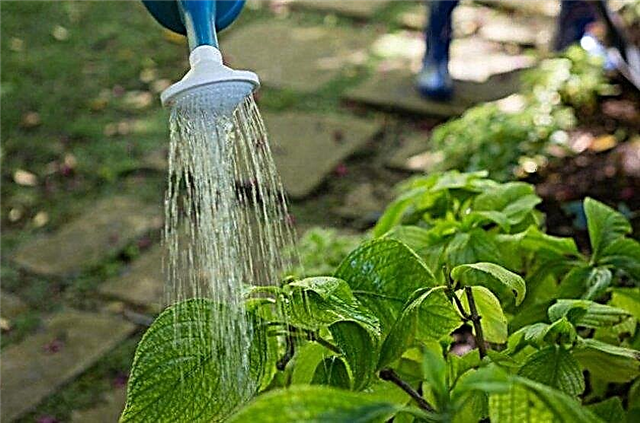
However, the most common causes include fungal and viral diseases, as well as the invasion of pests. In this case, only a quick and accurate diagnosis, as well as correctly prescribed treatment, will help to save the plant.
Did you know? To prevent the hydrangea from withering quickly after it has been cut, it is recommended to place the stems in a glass of boiling water for 30 seconds, after which the flowers can be placed in a vase.
Fungal diseases
Similar diseases are caused by exposure to pathogenic fungi. They carry a rather high danger in themselves, and their treatment can differ in a long and complex scheme. Despite the different initial stages of the disease, they all have a similar feature - the rapid spread throughout the plant and the defeat of all its fragments (from leaves to stem and inflorescences). Common causes of fungal diseases are increased humidity and initial infection of the soil and neighboring plants.
Among the fungi are common:
- Gray rot - First of all, it strikes foliage, having the appearance of a soft gray coating, which dries out over time, forming brown spots, and crumbles into dust. The main cause of rot is waterlogging, associated with excessive watering or large crowding of hydrangeas and closely growing plants. Fungal disease also poses a danger to vegetables, fruit trees, garden flowers and legumes.
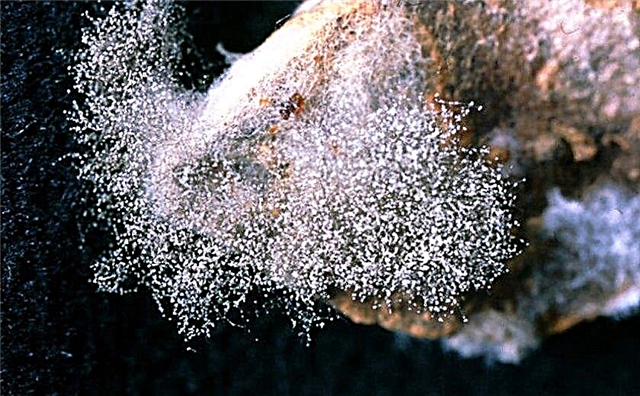
- Downy mildew (or peronosporosis) - has primary symptoms in the form of dark brown oily spots on hydrangea leaves. The disease is characterized by a fairly easy treatment, but only in the initial stages. The fungus, not detected immediately, quickly affects all areas of the flower, and it is almost impossible to get rid of it. The optimal conditions for the development of downy mildew are high humidity at elevated temperatures (more than + 20 ° C). Especially often this disease develops on sweet peas, marigolds, chrysanthemums. Also dangerous for vegetables.

- Septoria - fungus, the manifestation of which is accompanied by the formation of small (up to 5 mm) light spots with brown bordering. In the process of development, the disease spreads rapidly throughout the plant. Septoria often appears in cold and damp summer weather. It can also be a danger to garden crops such as: apple tree, quince, eggplant, raspberry. Of the flowers - chrysanthemums, peonies asters.
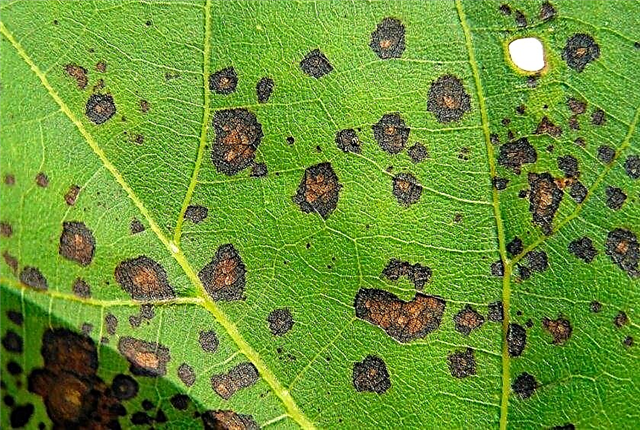
- Rust - The most common fungal disease caused by excess water and nitrogen in the soil. It has the appearance of small yellow spots, which in a short period of time develop into brown growths. Leaves in such conditions dry and fall. Inside the growths is mycelium - fungal spores in the form of rusty dust. With gusts of wind, they easily spread throughout the site, simultaneously infecting all plants (not only flowers, but also garden crops).
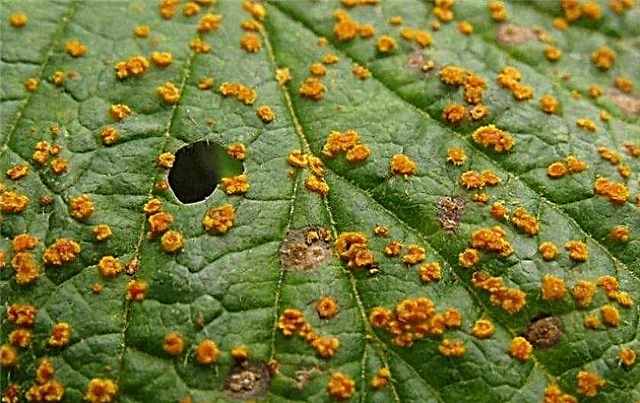
Pests
Hydrangea often becomes the target of attack of various harmful insects. The most common of them are:
- Leaf aphid - pests of small sizes, which, eating, suck the juice from all the soft parts of the plant. Of particular danger are their large numbers, which under normal conditions are regulated by their natural enemies (ladybugs, lacewings and others). The first signs of insect damage to the plant are the drying and yellowing of the foliage.
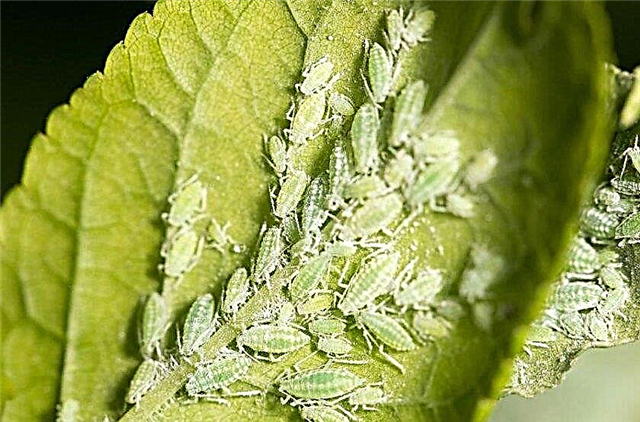
- Spider mite - a pest that is almost invisible to the human eye, which also feeds on the juice of the plant. The most active breeding occurs in dry, hot weather. You can see the affected areas of the plant by a thin web, as well as by the appearance of brown spots on the stem and foliage. The latter subsequently dry and curl.
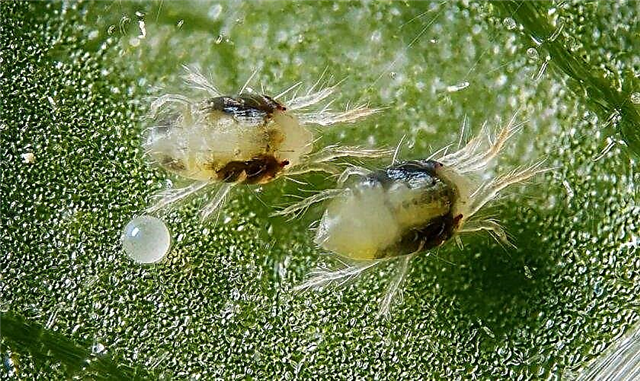
Viral diseases
Viral infections also often cause leaves and flowers to turn brown or rust. Diseases in these cases can be brought to the site by garden tools, as well as new plants or animal pests.
Important! All diseased plant fragments must not only be removed from the site, but also burned — this will prevent the spread of the disease throughout the site.
Among the most common diseases:
- Ring spotting - develops regardless of external factors and manifests itself in the form of spots of a ring-shaped shape (with a bright middle and dark border). In the absence of proper treatment, the foliage dries and falls, and the plant itself either completely stops flowering or produces very weakened buds. Due to the lack of effective drugs, hydrangea, affected by ring spotting, most often dies, so efforts should be focused on prevention and the right choice of planting material. It should also be taken into account that this virus is contagious for all cultures of the nightshade family, strawberries, currants and grapes. Some vegetables are also at risk - onions, cucumbers, cabbage, celery.
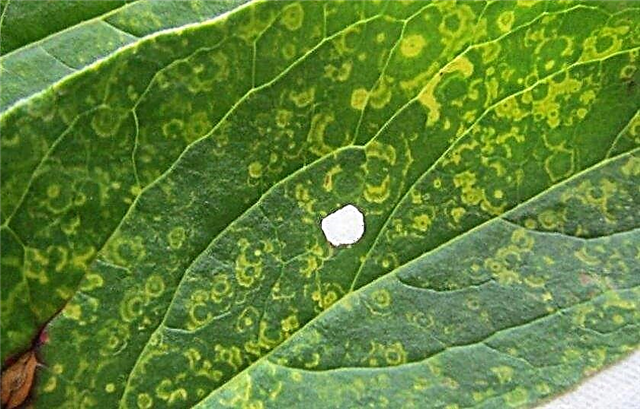
- Crayfish - A virus that appeared not so long ago, along with varietal planting material from Western Europe. Most often, such a disease affects plants weakened or having mechanical damage. The affected plant becomes covered with brownish or red spots, covered with ulcers on the back side. As in the case of ring spotting, there are no drugs that could successfully fight the disease, so at the first signs it is recommended to remove all fragments with characteristic spots from hydrangea, and in case of large areas of damage, destroy the whole plant. This approach will avoid an epidemic.
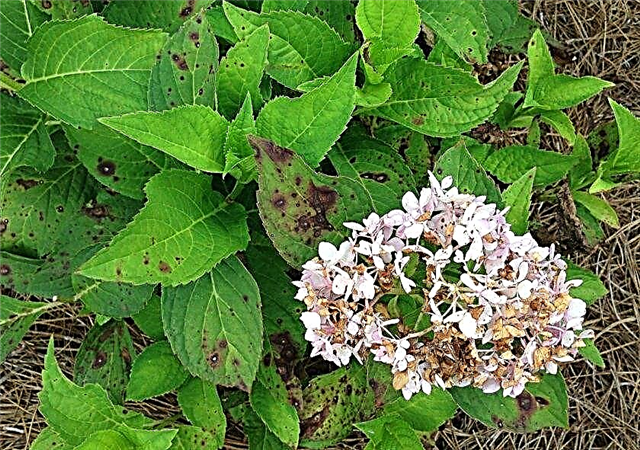
How to deal with brown spots on hydrangeas
Depending on the cause of the appearance of brown spots on hydrangeas, various methods of dealing with them are used. In the treatment of fungal diseases, folk remedies are often used, for example, after removing all the plant fragments affected by the disease, the cut sites are treated with a weak potassium permanganate solution or garden var. However, this approach will be effective only in the initial stages of fungal development.
A pest invasion will also require a quick response. With a small number of insects, you can knock off a plant with a stream of water under pressure, after carefully treating the entire bush with a soap solution or any mineral oil. Also, good results show a way to attract natural enemies of insects. For example, in the case of aphids, next to hydrangea, you can plant marigolds that attract ladybirds (their main food is aphids). Chemical treatments (e.g., broad-spectrum insecticides) are also effective.
Also minimize the occurrence of diseases in which hydrangea is covered with brown spots (including viral diseases, in which the use of any chemicals brings the proper effect), It is possible with the help of systematic preventive measures, which consists of several measures:
- maintaining a balance of acidity and mineral composition of the soil - watering should be carried out only with soft water, and nitrogen fertilizers should be applied with caution, following the instructions (their increased content in the soil negatively affects the condition of the deciduous cover of the plant);
- sunlight and humidity - the optimal place for healthy growth and hydrangea development is shaded areas with diffused light (direct sunlight can cause burns, and lack of moisture in the soil is fraught with the risk of powdery mildew and peronosporosis);
- the quality of planting material - seedlings must be selected with extreme caution, and at the first sign of viral diseases to destroy them;
- disinfection - the entire tool that participated in the removal of plants affected by diseases should be treated with antiseptics after completion of work;
- preventive treatments - every spring the bushes should be sprayed with fungicidal preparations.
 However, with a large lesion, a more powerful intervention will be required, which only fungicides can provide
However, with a large lesion, a more powerful intervention will be required, which only fungicides can provide
"Rayok"
Fungicidal antimycotic drug, which is intended to combat fungal diseases (alternariosis, scab, powdery mildew and others). The form of the drug is a concentrated emulsion. Application is possible both on large agricultural land, and in summer cottages and household plots. In this case, depending on the expected processing area, you can purchase the drug in different volumes - from 2 ml to 1 liter.
The fungicide "Rayok" contains the main active ingredient diphenoconazole (more than 25%), which actively affects the synthesis of fungal cells, inhibiting their growth, as well as the possibility of reproduction (stops the formation of mycelium).
- Among the various fungicidal preparations, "Rayok" stands out for its advantages, namely:
- penetration rate into plant tissues;
- the possibility of simultaneous application to several different types of plants;
- long period of protective validity;
- minimizing the chance of re-infection;
- effective protection of vegetative organs and fruits and increase yield;
- economical use;
- low toxicity to humans, bees and birds, as well as absolute safety for the environment;
- the ability to maintain their properties at elevated air temperatures (up to + 35 ° C).

- There are some disadvantages:
- development of resistance to the drug in fungal diseases is not excluded, and therefore there is a need for alternation with other agents;
- low efficacy in the control of powdery mildew;
- danger to fish.
"Speed"
Fungicidal preparation of wide use, which is designed to protect fruit, ornamental crops, as well as vegetables from bacterial and fungal diseases.

In addition to effective treatment, the drug can be used as a preventative measure and, most importantly, can be used at any stage of plant development. The “Skor” form is an emulsion concentrate, the main active ingredient is diphenoconazole (a class of triazoles) in the proportions of 250 g per 1 liter of the preparation.
- Due to the chemical structure, “Skor” has many advantages in comparison with other chemical products of this class:
- the ability to absorb substances in all parts of the plant in which photosynthesis is observed;
- effective inhibition of the sporulation of pathogens of infectious diseases and, as a result, weakening of the intensity of the course;
- prevention of the formation of resistance of pathogens to chemical preparations, in case of use according to the instructions;
- a significant increase in bushiness and an increase in shoots.
- There are some disadvantages:
- the greatest effectiveness is achieved only in the first 2-3 days of the development of the disease;
- "Work" of the drug will be effective only at temperatures from +14 to + 25 ° C.
Falcon
A broad-spectrum fungicidal preparation and systemic properties in the form of a concentrated emulsion. A distinctive feature is the presence of three active ingredients at once in the composition: tebuconazole - 167 g per 1 l, triadimenol - 43 g per 1 l, spiroxamine - 250 g per 1 l, which completely eliminates the possibility of the formation of fungus resistance to the drug. In case of missing the first phases of the disease, the dosage should be doubled.
Important! Any treatment of plants in summer is allowed in the morning or evening in calm weather, because at elevated air temperatures the water from the composition evaporates too quickly, and the air is saturated with concentrated vapors of the preparation, which may be unsafe for human health.
- Among the main advantages are noted:
- high efficiency;
- wide range of use;
- the possibility of use as a prophylaxis;
- cost-effectiveness of dosages;
- no negative effect on bees.
Among the disadvantages, the most significant is the high cost of the drug.

"Topaz"
A fungicidal drug that successfully copes with powdery mildew pathogenic fungi. When sprayed, it penetrates into all plant structures, exerting an overwhelming effect on the growth and development of fungal infections. The main active ingredient of Topaz is the synthetic triazole penconazole, the concentration of which in the preparation is 100 g per 1 liter.
- The drug has many advantages:
- profitability - despite the high cost, the dosage is small in volume;
- ease of use - the packaging allows the fungicide to be taken in parts;
- high degree of absorption, which ensures the absence of film formation or plaque on the surface of the plant;
- lack of crop selectivity (suitable for everyone) and phytotoxicity (affecting the growth and development of plants);
- thermal stability of the drug and reduced volatility, which can significantly narrow the protection zones;
- compatibility with pesticides, which allows the use of "Topaz" in complex protective systems.
The disadvantages are the synthetic nature of the main active ingredient and the property of accumulation of the drug in the soil, so the recommended period of use is no more than 3 years.

Rust prevention
Rust is one of the most common diseases that occur on plants. Despite the fact that this disease is treatable, its spread over the site can be very fast. And therefore, in order not to cause an epidemic, rust, like any other disease, is easier to prevent.
Did you know? In the language of flowers, hydrangea means modesty, sincerity and hope, and also calls for shared memories.
There are several basic preventive measures that are the most effective ways to combat the disease:
- during watering, it is necessary to ensure that the liquid does not fall on the foliage of the plant;
- if infected hydrangea fragments are detected, they should be removed from the bush as soon as possible and burned;
- in the autumn period, in the process of preparing plants for winter, it is recommended to carefully remove fallen leaves and fruits from the surface of the earth, and broken and damaged branches from the bush itself;
- with the onset of spring, before planting, the soil should be dug up - this approach will get rid of harmful spores;
- Before sowing hydrangea, all seed should undergo a mandatory etching procedure using fungicidal preparations;
- cuttings and cuttings can only be taken from a guaranteed healthy plant;
- potassium phosphorus fertilizers should be systematically applied to the soil;
- it is recommended to carry out spring preventive treatment with fungicides annually;
- planting crops should be carried out taking into account their resistance to various types of fungal diseases (including rust);
- regular weeding minimizes the possibility of infection of hydrangea bushes from weed grass.

Most hydrangea diseases can be easily treated, the main thing is to conduct the correct diagnosis in time and prescribe treatment as soon as possible. Also, do not forget about systematic preventive measures, which will guarantee the health of all crops on the site and the beautiful appearance of garden flowers, without brown spots on the leaves and inflorescences.











